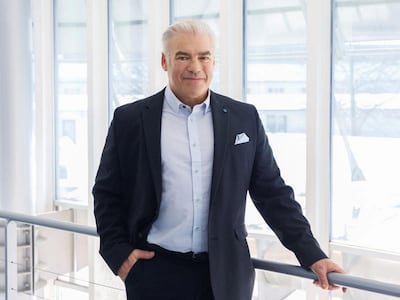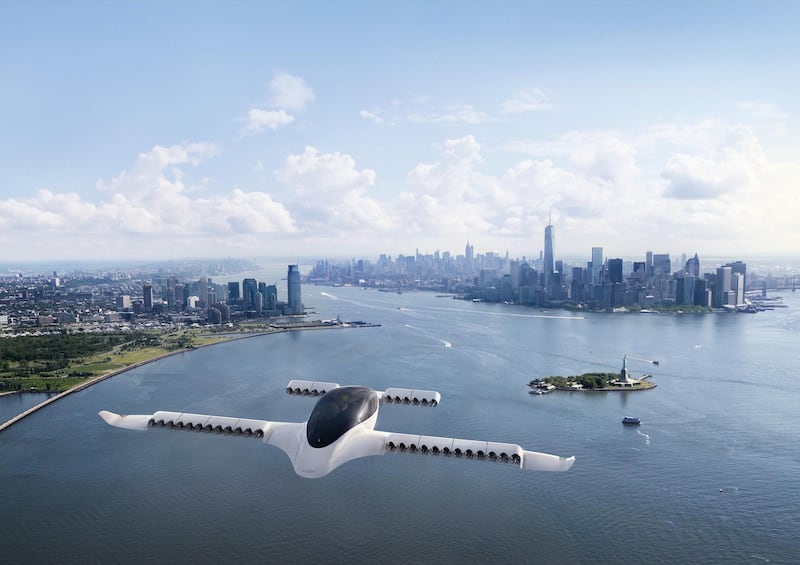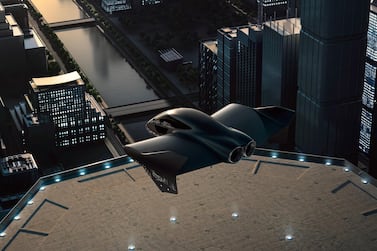Frank Stephenson's reputation precedes him. The British-American automobile designer started his career working for Ford before moving to BMW, where he spent 11 years. In the years that followed, he worked with Ferrari and Fiat before being appointed design director at McLaren Automotive in 2008 – what he calls a dream job. So when he left the role in 2017, after 30 years of working in car design, to start his own design studio, it raised a lot of eyebrows. For the designer, however, it was a natural progression.
“It’s not like I planned my career before I started – it just happened that it was an upward climb. And working as head of design of McLaren, a supercar company, was every designer’s dream. But when you reach the highest level, you start to look outside for even bigger challenges. That’s what happened to me,” he says.
He launched his company, Frank Stephenson Design Consultancy, based on four key values: the products it designed would add value to the market; they would make use of cutting-edge technology; they would be good for the environment; and they would to be inspired by nature. For Stephenson, this was a way of giving back to the industry. “Working with luxury cars is a dream job. But it doesn’t make a lot of people happy – just a few,” he says. “I wanted to take whatever good design years I had left to choose my own projects and reach a wider population.”
Some of the projects he's currently working on include a range of eyewear that incorporates smart technology, and wristwatches that are purpose-designed for air, water and earth, and will be coming to the market next year. And then there is BabyArk, which Stephenson described as the "safest child car seat" during a recent speech he gave at Nasa. It's a far cry from luxury cars – but Stephenson loves the work all the same. "For BabyArk, I had to look at creating a design that was functional while also being aesthetically pleasing. People think that it's much more exciting to design a sports car, but anyone who enjoys being a designer inside out, will find any project exciting. I find designing baby seats just as exciting as cars. In the end, it's about bringing something new to the table."

With the car seat and the eyewear, Stephenson took inspiration from nature. In fact, this is commonplace for the designer who is an advocate for the concept of biomimicry – the process of modelling a structure on living beings such as birds and animals.
"If you think about it, the design of nature has evolved over millennia," says Stephenson. "It has to be the best of the best as the bad 'designs' don't survive. That's proof that the design is long-lasting, and that's really what you want. Moreover, nothing in nature is overdone. It's always just enough to do a job effectively. A lot of people have an idea that something looks futuristic, but I always tell them that doesn't mean anything. It's all out there for us to design. It all just depends on how curious we are."
Intriguingly, Stephenson has also applied this love for nature to another project he's working on in his capacity as the head of product design for Lilium. The German start-up is currently in the process of creating an on-demand air taxi service. To create the shape of the Lilium aircraft, Stephenson looked to the skies and seas, taking inspiration from birds and fish.
Working on a design for air taxis is also in line with his mission to be a part of products that he calls “more mass market”, in that they can be used by more people in the years to come. Of course, flying taxis aren’t exactly mainstream at the moment – but Stephenson is confident that they are the future of urban mobility. “Not everyone wants to own cars; no one wants to worry about maintenance and resale problems. Most people these days have moved to taxis or Ubers. Air cabs may also be the solution to the problem taxis now face. They could be cheaper as they don’t need a lot of the infrastructure once you have built the device, the take-off and landing port.”
With airborne transportation already in testing phases by a lot of companies, it looks like the future is closer than we think, adds Stephenson, who says perhaps we may see air taxi services becoming commercial as early as 2025. "I know it sounds a lot like science fiction," he adds. "But there are a lot of intelligent people working on it. And while the older generation will probably be hesitant, I think the younger generation will welcome it. Imagine hotels having their receptions on rooftops to make way for people who are landing there. And there are other services eVols [vertical take-off and landing aircraft] can be used for. In the medical sector, it could get people from one part of the city to another. In tourism, people could put on virtual reality goggles that make the taxi disappear, so it feels like they're flying."
Stephenson, who has made several trips to the UAE, calls it an incredible environment design-wise, with “forward-thinking people who appreciate innovation”. Does that mean he sees flying taxis becoming commercial here in the near future? “Oh, for sure,” he says. “Who knows? It might just happen there first.”








